JMSJ Editor's Highlights
- Volume 103 (2025), Issue 3: Takahashi and Sakazaki, 2025
- Volume 103 (2025), Issue 3: Ishizaki et al., 2025
- Volume 103 (2025), Issue 3: Sakazaki and Schindelegger, 2025
- Volume 103 (2025), Issue 3: Abe et al., 2025
- Volume 103 (2025), Issue 1: Kanno et al., 2025
- Volume 103 (2025), Issue 2: Ito et al., 2025
- Volume 103 (2025), Issue 1: Ishii et al., 2025
- Volume 102 (2024), Issue 6: Fukui et al., 2024
- Volume 102 (2024), Issue 5: Shimada et al., 2024
- Volume 102 (2024), Issue 5: Sekido et al., 2024
- Volume 102 (2024), Issue 2: Inoue et al., 2024
- Volume 102 (2024), Issue 2: Ishii et al., 2024
- Volume 102 (2024), Issue 2: Yokota et al., 2024
- Volume 102 (2024), Issue 1: Kosaka et al., 2024
- Volume 102 (2024), Issue 1: Duc et al., 2024
- Volume 101 (2023), Issue 6: Kawabata et al., 2023
- Volume 101 (2023), Issue 4: Rojahn et al., 2023
- Volume 101 (2023), Issue 2: Hirahara et al., 2023
- Volume 101 (2023), Issue 1: Liang et al., 2023
- Volume 101 (2023), Issue 1: Wu et al., 2023
- Volume 100 (2022), Issue 2: Ishioka et al., 2022
- Volume 99 (2021), Issue 2: Chandra et al., 2021
- Volume 99 (2021), Issue 2: Seto et al., 2021
- Volume 98 (2020), Issue 4: Kawabata and Yamaguchi, 2020
- Volume 98 (2020), Issue 2: Stevens et al., 2020
- Volume 98 (2020), Issue 1: Takemura and Mukougawa, 2020
- Volume 97 (2019), Issue 6: Tsuyuki, 2019
- Volume 97 (2019), Issue 5: Yukimoto et al., 2019
- Volume 97 (2019), Issue 4: Liu et al., 2019
- Volume 97 (2019), Issue 2: Ose, T. 2019
JMSJ Editor's Highlight (Vol. 103 (2025), Issue 3)
-
Takahashi, K., and T. Sakazaki, 2025: The climatological features of atmospheric rivers and their role in water vapor transport in the south polar region.
J. Meteor. Soc. Japan
,
103
, 389−410.
https://doi.org/10.2151/jmsj.2025-020
Graphical Abstract
[Comments from Editor in charge and Abstract]
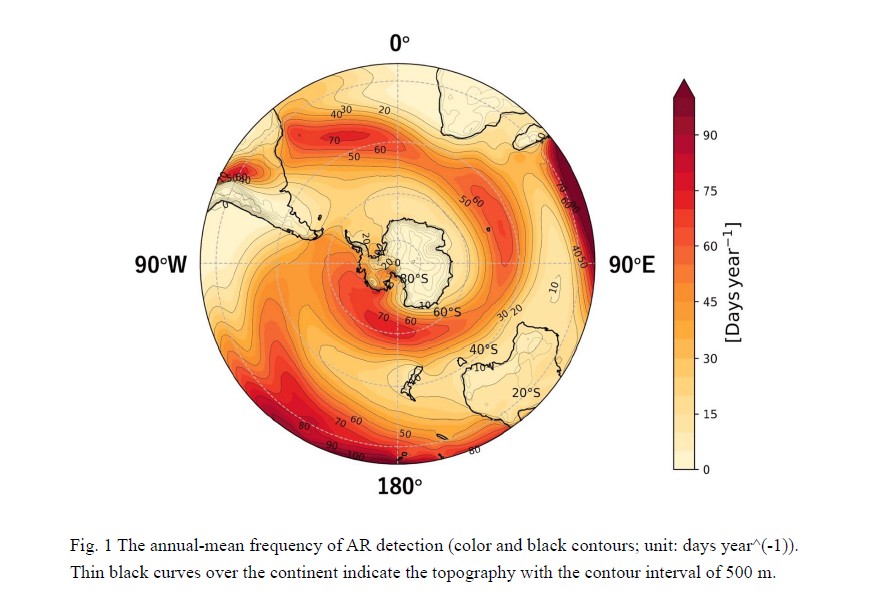
JMSJ Editor's Highlight (Vol. 103 (2025), Issue 3)
-
Ishizaki, H., K. Okazaki, T. Sakazaki, and K. Ishioka, 2025: Eigenvalue analysis of atmospheric free oscillations under the influence of a zonal mean field.
J. Meteor. Soc. Japan
,
103
, 411-435.
https://doi.org/10.2151/jmsj.2025-021
Graphical Abstract
[Comments from Editor in charge and Abstract]
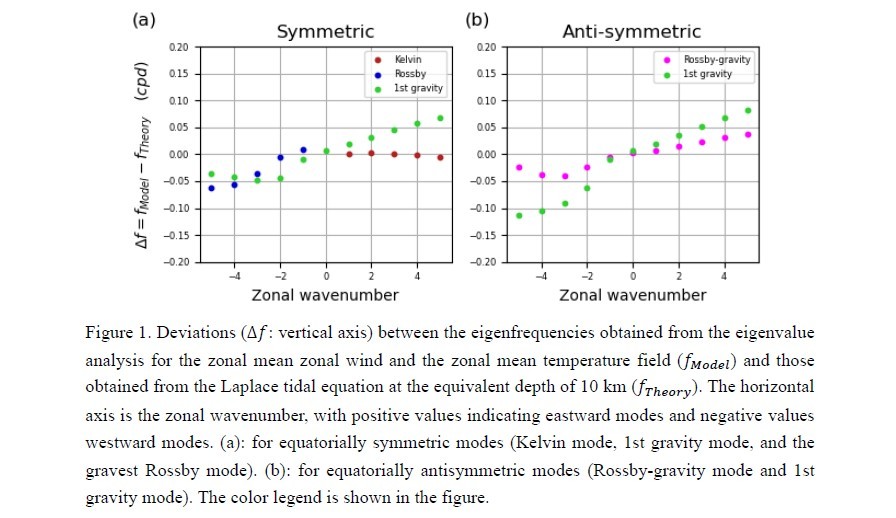
JMSJ Editor's Highlight (Vol. 103 (2025), Issue 3)
-
Sakazaki, T., and M. Schindelegger, 2025: Global atmospheric normal modes identified in surface barometric observations.
J. Meteor. Soc. Japan
,
103
, 371−388.
https://doi.org/10.2151/jmsj.2025-019
Graphical Abstract
[Comments from Editor in charge and Abstract]
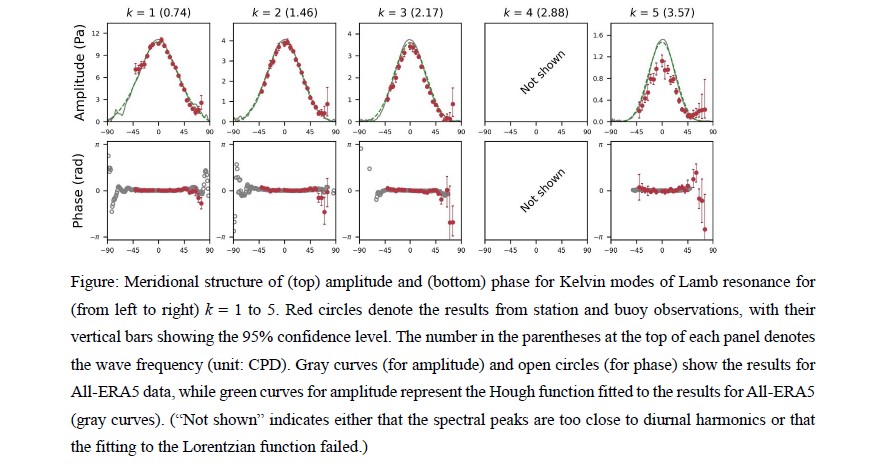
JMSJ Editor's Highlight (Vol. 103 (2025), Issue 3)
-
Abe, M., H. Fudeyasu, and M. Sasaoka, 2025: Historical review of research activities toward typhoons/hurricanes modification in Japan and the United States.
J. Meteor. Soc. Japan
,
103
, 305-320.
https://doi.org/10.2151/jmsj.2025-015
Graphical Abstract
[Comments from Editor in charge and Abstract]
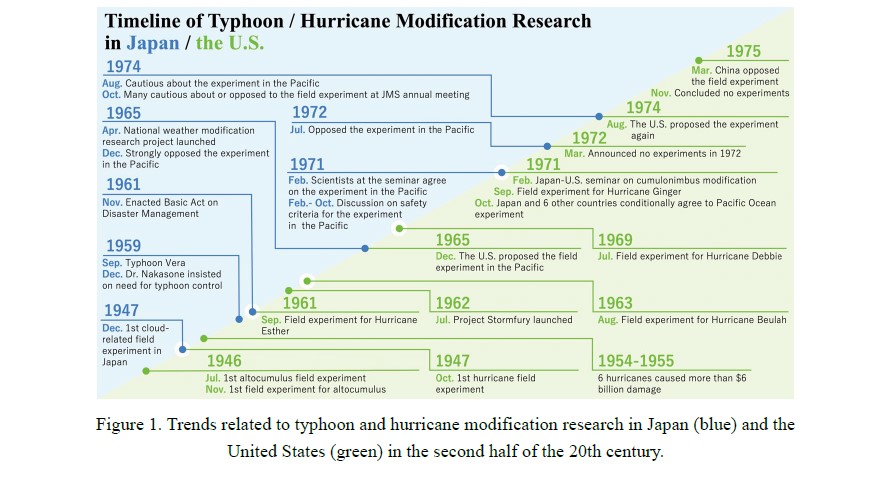
JMSJ Editor's Highlight (Vol. 103 (2025), Issue 2)
-
Ito, K., Y. Miyamoto, C.-C. Wu, A. Didlake, J. Hlywiak, Y.-H. Huang, T.-K. Lai, L. Pattie, N. Qin, U. Shimada, D. Tao, Y. Yamada, J. A. Zhang, S. Kanada, and D. Herndon, 2025: Recent research and operational tools for improved understanding and diagnosis of tropical cyclone inner core structure.
J. Meteor. Soc. Japan
,
103
, 147-180.
https://doi.org/10.2151/jmsj.2025-008
Graphical Abstract
[Comments from Editor in charge and Abstract]

JMSJ Editor's Highlight (Vol. 103 (2025), Issue 1)
-
Kanno, Y., S. Sugimoto, and M. Murakami, 2025: Synoptic- and meso-scale features of the heavy wet snow accretion event along the Okhotsk Sea coast on December 22–23, 2022.
J. Meteor. Soc. Japan
,
103
, 45-66 .
https://doi.org/10.2151/jmsj.2025-003
Graphical Abstract
[Comments from Editor in charge and Abstract]
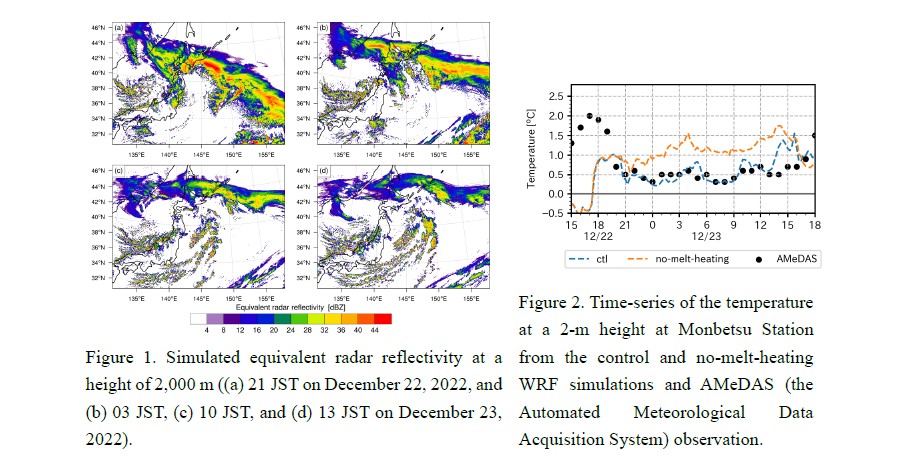
JMSJ Editor's Highlight (Vol. 103 (2025), Issue 1)
-
Ishii, M., A. Nishimura, S. Yasui, and S. Hirahara, 2025: Historical high-resolution daily SST analysis (COBE-SST3) with consistency to monthly land surface air temperature.
J. Meteor. Soc. Japan
,
103
, 17-44.
https://doi.org/10.2151/jmsj.2025-002
Graphical Abstract
[Comments from Editor in charge and Abstract]
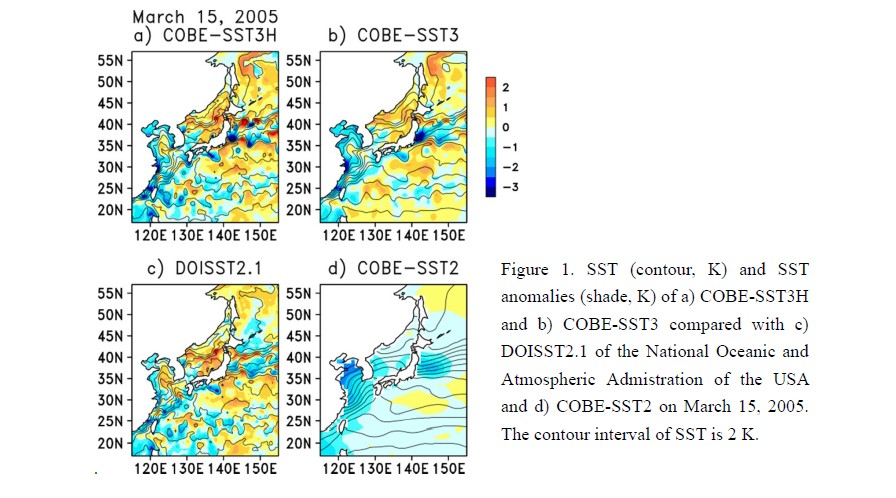
JMSJ Editor's Highlight (Vol. 102 (2024), Issue 6)
-
Fukui, S., E. Shirakawa, D. Soga, R. Ohara, K. Usui, K. Takiguchi, K. Ono, T. Hirose, S. Matsushima, J. Ito, T. Yamazaki, K. Saito, H. Seko, and T. Iwasaki, 2024: Long-term regional reanalysis for Japan with assimilating conventional observations (RRJ-Conv).
J. Meteor. Soc. Japan
,
102
, 677-696.
https://doi.org/10.2151/jmsj.2024-036
Graphical Abstract
[Comments from Editor in charge and Abstract]
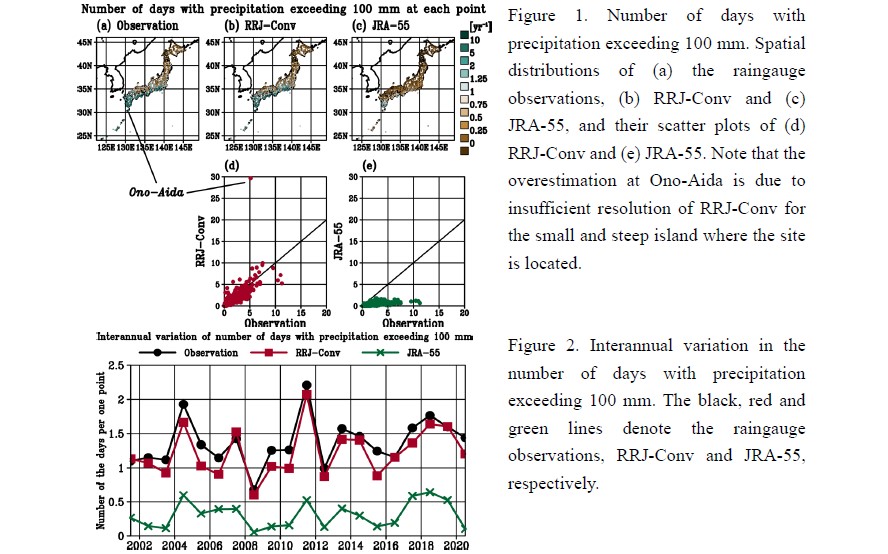
JMSJ Editor's Highlight (Vol. 102 (2024), Issue 5)
-
Shimada, U., M. Hayashi, and A. Mouche, 2024: A comparison between SAR wind speeds and western North Pacific tropical cyclone best track estimates.
J. Meteor. Soc. Japan
,
102
, 575-593.
https://doi.org/10.2151/jmsj.2024-031
Graphical Abstract
[Comments from Editor in charge and Abstract]

JMSJ Editor's Highlight (Vol. 102 (2024), Issue 5)
-
Sekido, H., K. Sato, H. Okui, D. Koshin, and T. Hirooka, 2024: A study of zonal wavenumber 1 Rossby-gravity wave using long-term reanalysis data for the whole neutral atmosphere.
J. Meteor. Soc. Japan
,
102
, 539-553.
https://doi.org/10.2151/jmsj.2024-029
Graphical Abstract
[Comments from Editor in charge and Abstract]

JMSJ Editor's Highlight (Vol. 102 (2024), Issue 4)
-
Inoue, T., T. T. Sekiyama, and A. Kudo, 2024: Development of a temperature prediction method combining deep neural networks and a Kalman filter.
J. Meteor. Soc. Japan
,
102
, 415-427.
https://doi.org/10.2151/jmsj.2024-020
Graphical Abstract
[Comments from Editor in charge and Abstract]
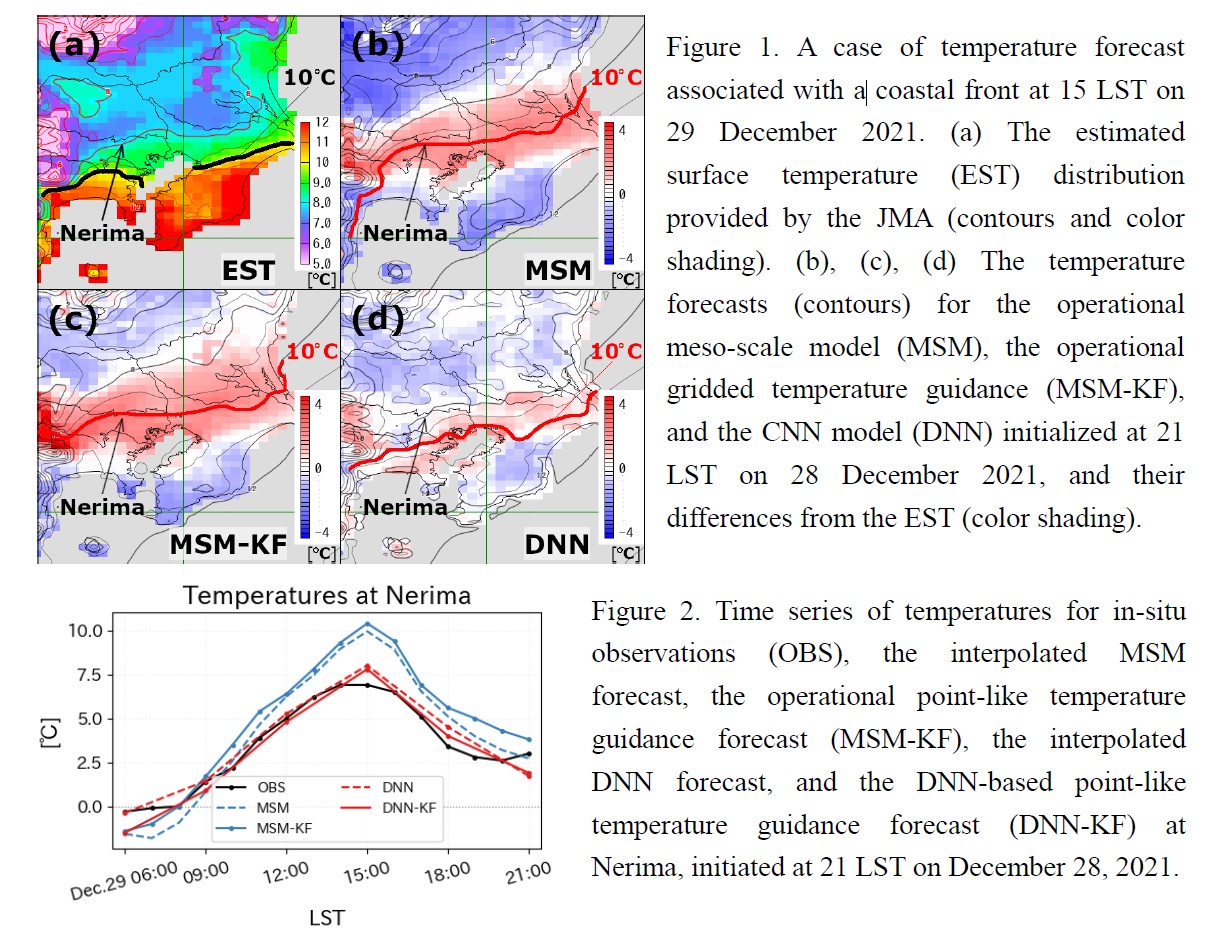
JMSJ Editor's Highlight (Vol. 102 (2024), Issue 2)
-
Ishii, M., H. Kamahori, H. Kubota, M. Zaiki, R. Mizuta, H. Kawase, M. Nosaka, H. Yoshimura, N. Oshima, E. Shindo, H. Koyama, M. Mori, S. Hirahara, Y. Imada, K. Yoshida, T. Nozawa, T. Takemi, T. Maki, and A. Nishimura,, 2024: Global historical reanalysis with a 60-km AGCM and surface pressure observations: OCADA.
J. Meteor. Soc. Japan
,
102
, 209-240.
https://doi.org/10.2151/jmsj.2024-010
Graphical Abstract
[Comments from Editor in charge and Abstract]
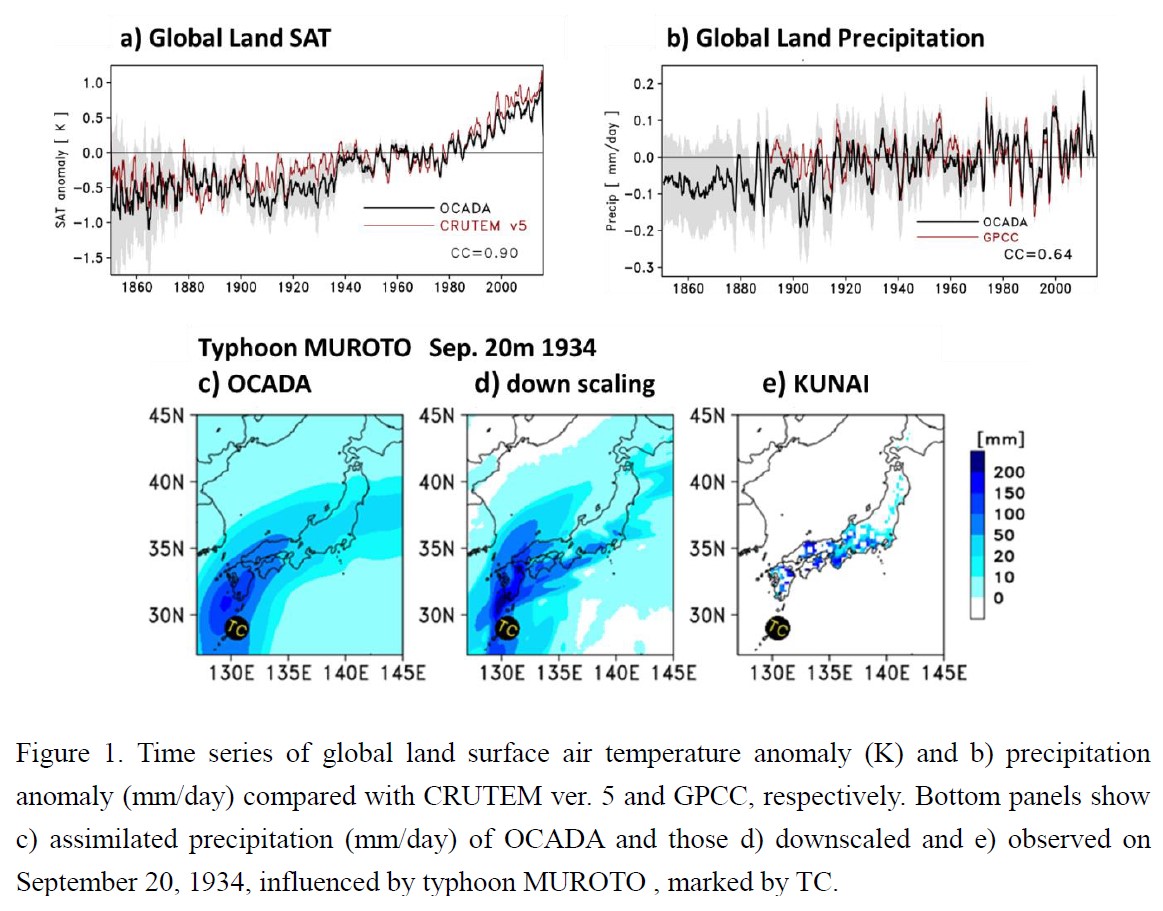
JMSJ Editor's Highlight (Vol. 102 (2024), Issue 2)
-
Yokota, S., T. Banno, M. Oigawa, G. Akimoto, K. Kawano, and Y. Ikuta, 2024: JMA operational hourly hybrid 3DVar with singular 3Vector-based Mesoscale Ensemble Prediction System.
J. Meteor. Soc. Japan
,
102
, 129-150.
https://doi.org/10.2151/jmsj.2024-006
Graphical Abstract
[Comments from Editor in charge and Abstract]
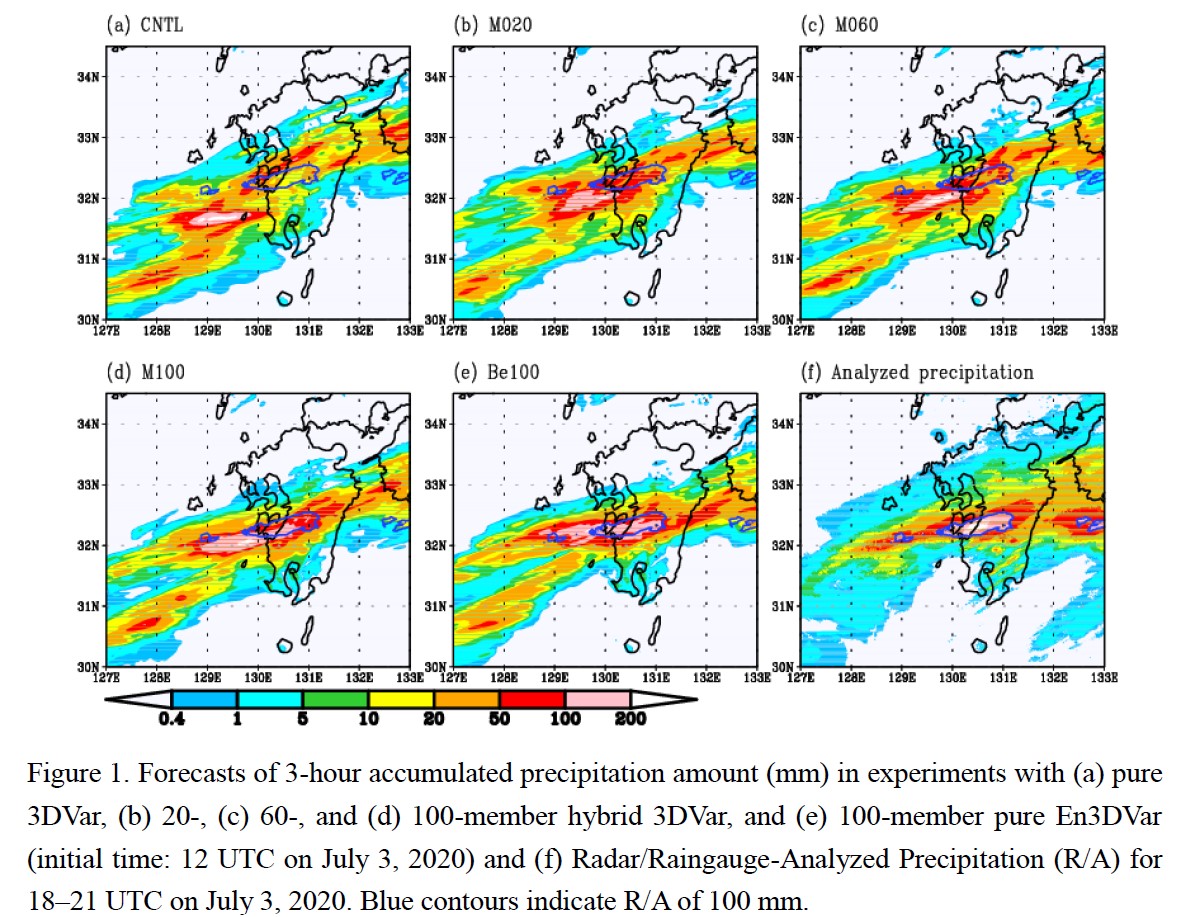
JMSJ Editor's Highlight (Vol. 102 (2024), Issue 1)
-
Kosaka, Y., S. Kobayashi, Y. Harada, C. Kobayashi, H. Naoe, K. Yoshimoto, M. Harada, N. Goto, J. Chiba, K. Miyaoka, R. Sekiguchi, M. Deushi, H. Kamahori, T. Nakaegawa; T. Y.Tanaka, T. Tokuhiro, Y. Sato, Y. Matsushita, and K. Onogi, 2024: The JRA-3Q Reanalysis.
J. Meteor. Soc. Japan
,
102
, 49-109.
https://doi.org/10.2151/jmsj.2024-004
Graphical Abstract
[Comments from Editor in charge and Abstract]

JMSJ Editor's Highlight (Vol. 102 (2024), Issue 1)
-
Duc, L., and Y. Sawada, 2024: Geometry of rainfall ensemble means: from arithmetic averages to Gaussian-Hellinger barycenters in unbalanced optimal transport.
J. Meteor. Soc. Japan
,
102
, 35-47.
https://doi.org/10.2151/jmsj.2024-003
Graphical Abstract
[Comments from Editor in charge and Abstract]
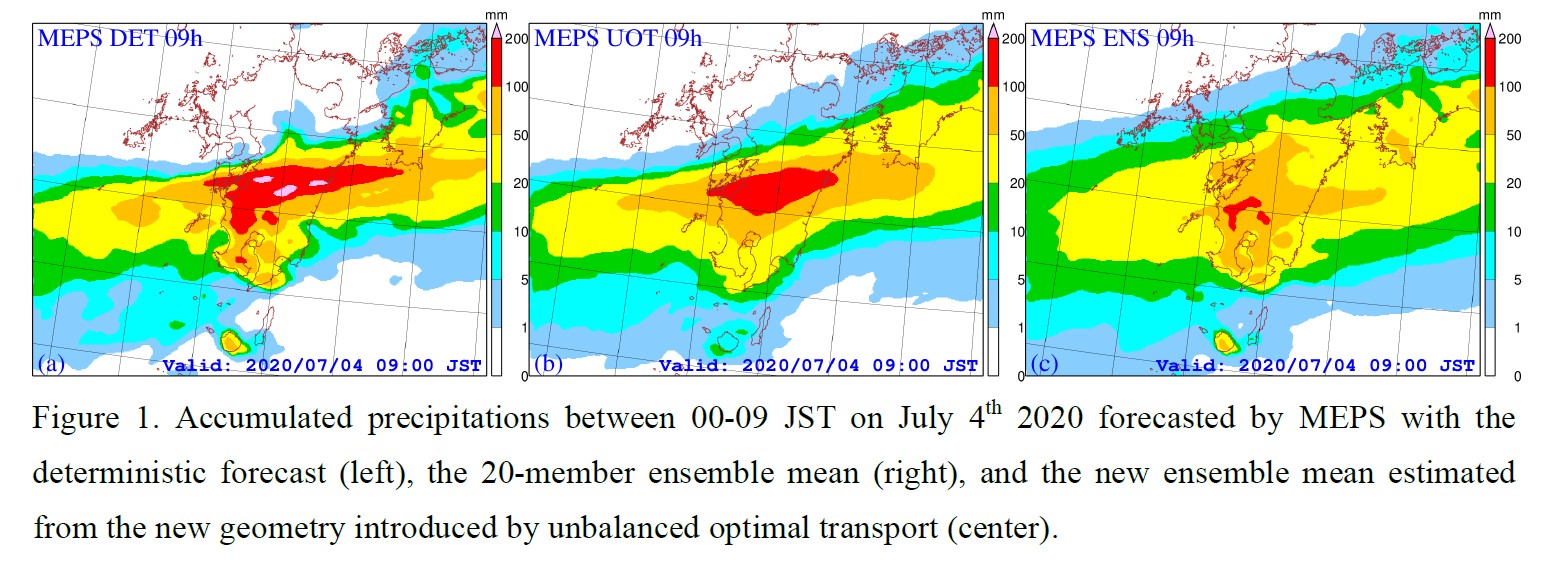
JMSJ Editor's Highlight (Vol. 103 (2025), Issue 3)
JMSJ Editor's Highlight (Vol. 103 (2025), Issue 2)
JMSJ Editor's Highlight (Vol. 103 (2025), Issue 1)
JMSJ Editor's Highlight (Vol. 103 (2025), Issue 1)
JMSJ Editor's Highlight (Vol. 102 (2024), Issue 6)
JMSJ Editor's Highlight (Vol. 102 (2024), Issue 5)
JMSJ Editor's Highlight (Vol. 102 (2024), Issue 5)
JMSJ Editor's Highlight (Vol. 102 (2024), Issue 4)
JMSJ Editor's Highlight (Vol. 102 (2024), Issue 2)
JMSJ Editor's Highlight (Vol. 102 (2024), Issue 2)
JMSJ Editor's Highlight (Vol. 102 (2024), Issue 1)
JMSJ Editor's Highlight (Vol. 102 (2024), Issue 1)
JMSJ Editor's Highlight (Vol.101 (2023), Issue 6)
-
Kawabata, Y., U. Shimada and M. Yamaguchi, 2023: The 30-year (1987-2016) trend of strong typhoons and genesis locations found in the Japan Meteorological Agency’s Dvorak reanalysis data.
J. Meteor. Soc. Japan
,
101
.
https://doi.org/10.2151/jmsj.2023-025
Early Online Release Graphical Abstract
[Comments from Editor in charge and Abstract]

JMSJ Editor's Highlight (Vol.101 (2023), Issue 4)
-
Rojahn A., N. Schenk, P.-J. van Leeuwen and P. Roland, 2023: Particle filtering and gaussian mixtures - On a Localized Mixture Coefficients Particle Filter (LMCPF) for global NWP.
J. Meteor. Soc. Japan
,
101
.
https://doi.org/10.2151/jmsj.2023-015
Early Online Release Graphical Abstract
[Comments from Editor in charge and Abstract]
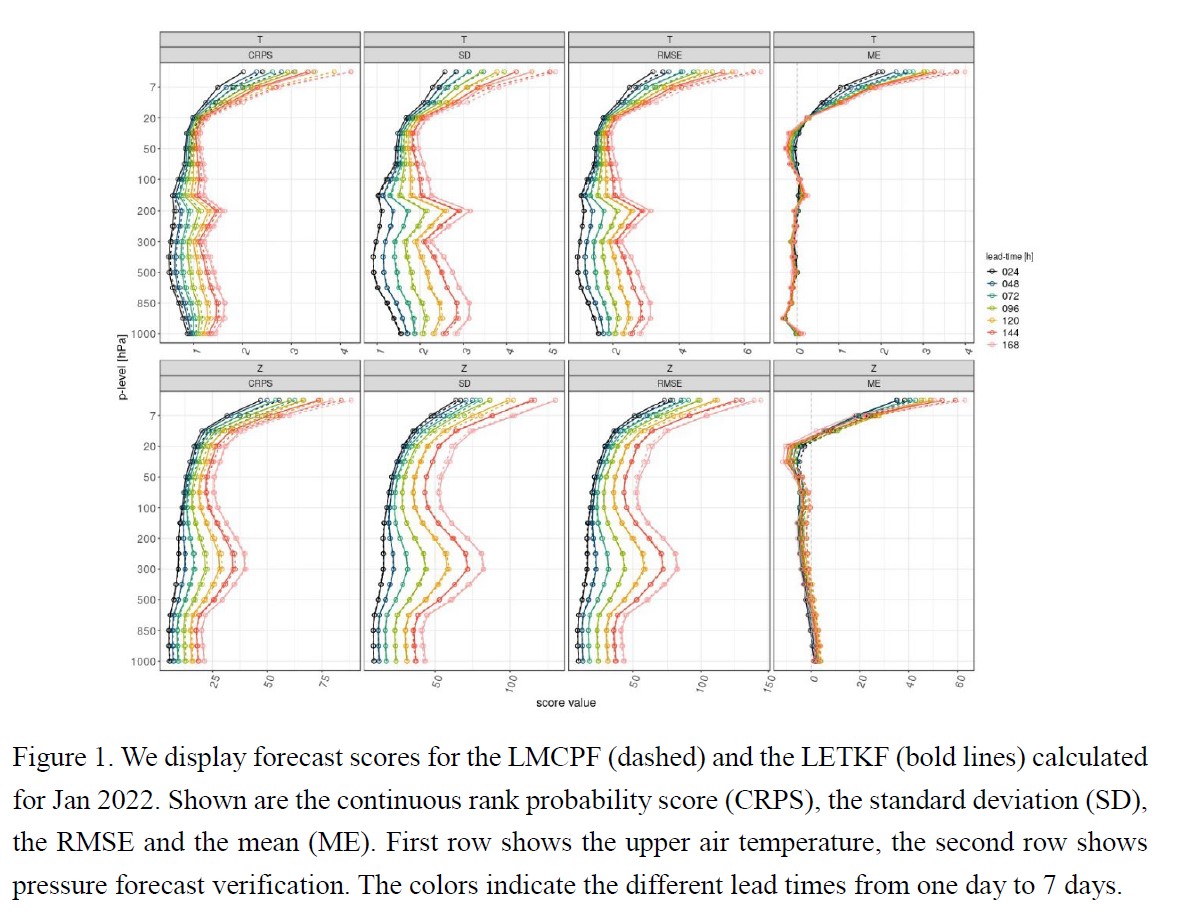
JMSJ Editor's Highlight (Vol.101 (2023), Issue 2)
-
Hirahara S., Y. Kubo, T. Yoshida, T. Komori, J. Chiba, T. Takakura, T. Kanehama, R. Sekiguchi, K. Ochi, H, Sugimoto, Y. Adachi, I. Ishikawa and Y. Fujii, 2023: Japan Meteorological Agency/Meteorological Research Institute Coupled Prediction System version 3 (JMA/MRI-CPS3).
J. Meteor. Soc. Japan
,
101
.
https://doi.org/10.2151/jmsj.2023-009
Early Online Release Graphical Abstract
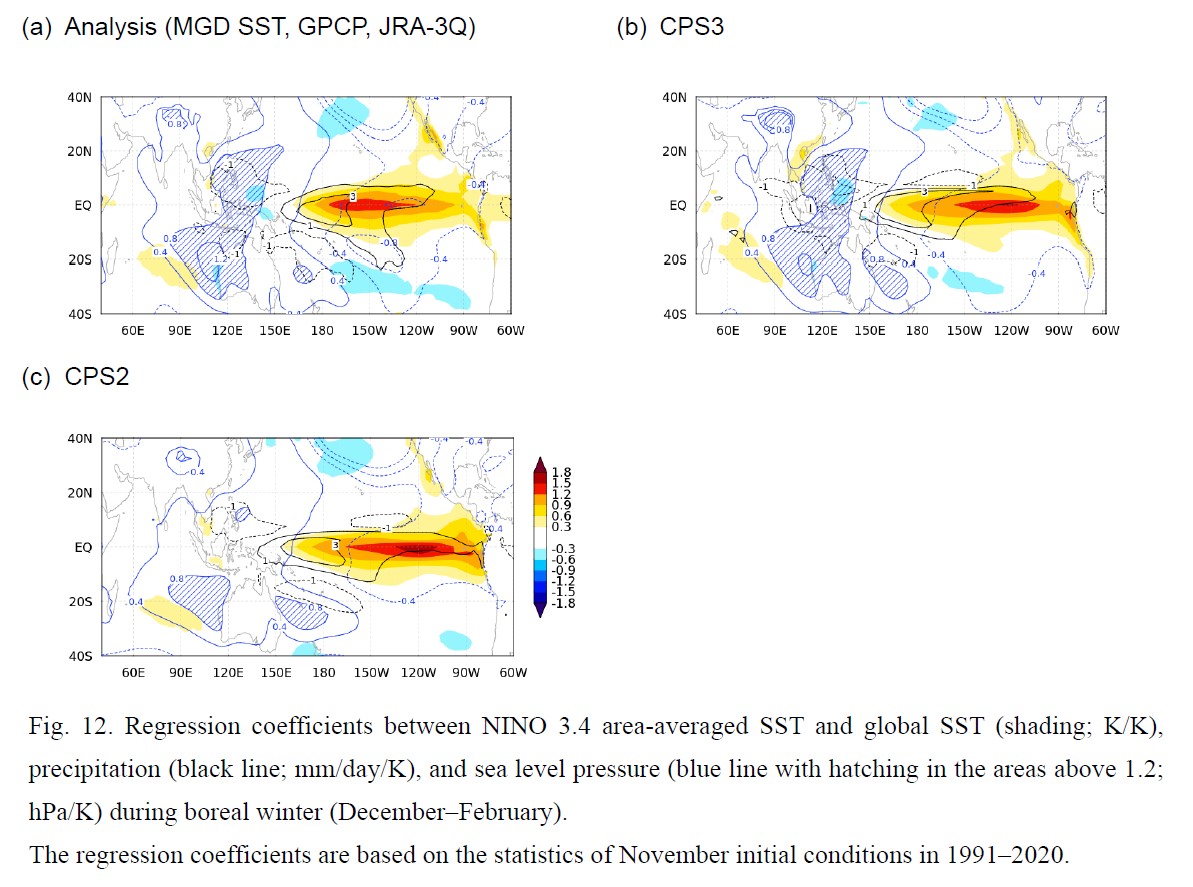
JMSJ Editor's Highlight (Vol.101 (2023), Issue 1)
-
Liang J., K. Terasaki and T. Miyoshi, 2023: A Machine Learning Approach to the Observation Operator for Satellite Radiance Data Assimilation.
J. Meteor. Soc. Japan
,
101
.
https://doi.org/10.2151/jmsj.2023-005
Early Online Release Graphical Abstract

JMSJ Editor's Highlight (Vol.101 (2023), Issue 1)
-
Wu, J., Y. Kurosaki, T. T. Sekiyama and T. Maki, 2023: Effects of dry vegetation coverage estimated from the MODIS Soil Tillage Index on dust occurrence: Verification by surface synoptic observations.
J. Meteor. Soc. Japan
,
101
.
https://doi.org/10.2151/jmsj.2023-004
Early Online Release Graphical Abstract
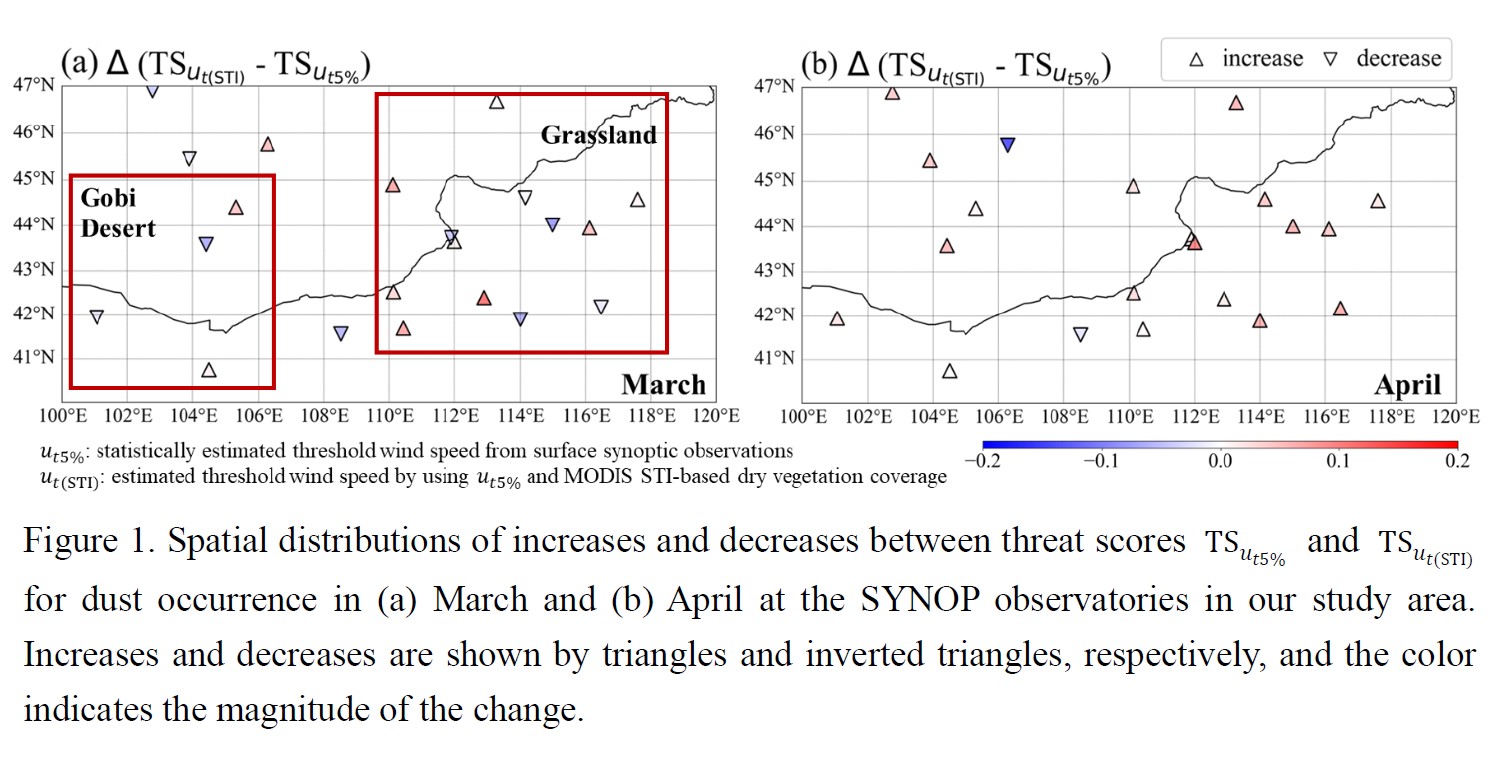
JMSJ Editor's Highlight (Vol.100 (2022), Issue 2)
|
Ishioka, K., N. Yamamoto, and M. Fujita, 2022: A formulation of a three-dimensional spectral model for the primitive equations.
J. Meteor. Soc. Japan
,
100
, 445-469.
https://doi.org/10.2151/jmsj.2022-022 Graphical Abstract |
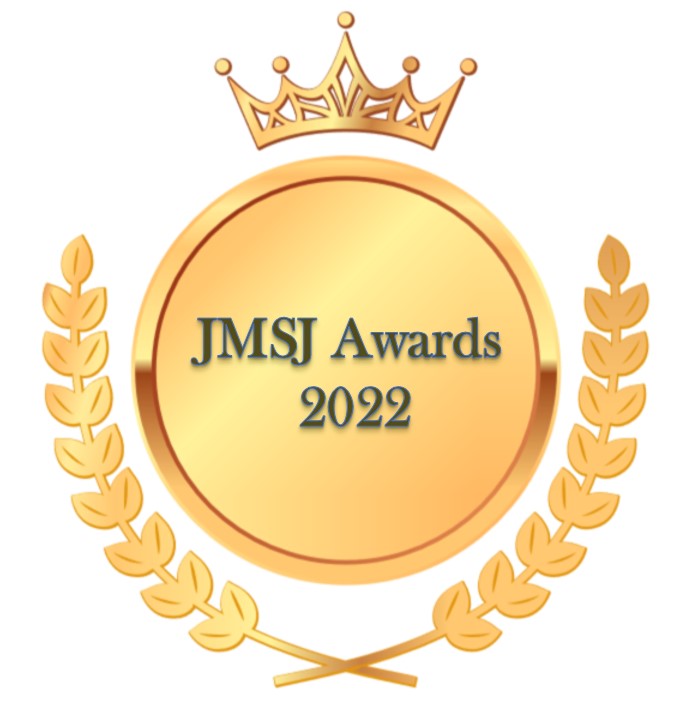
|
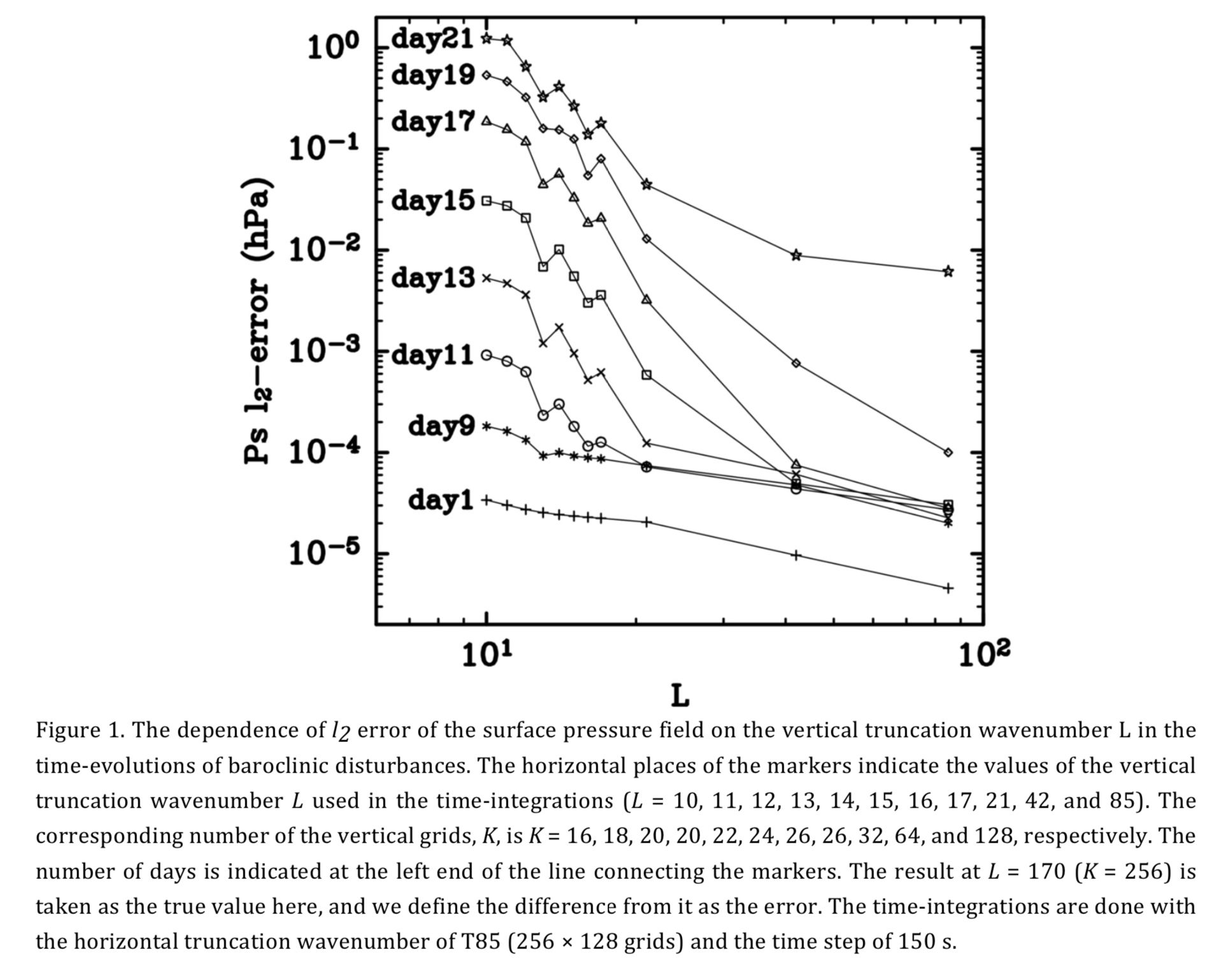
A formulation of a three-dimensional spectral model based on the primitive equations is proposed. In this formulation, the Legendre polynomial expansion is used for the vertical discretization. By performing several calculations with different vertical degrees of freedom, a characteristic property of the spectral method is observed in which the error of the numerical solution decreases rapidly when the number of vertical degrees of freedom is increased. [Comments from Editor in charge and Abstract]
JMSJ Editor's Highlight (Vol.99 (2021), Issue 2)
|
Chandra, N., P. K. Patra, J. S. H. Bisht, A. Ito, T. Umezawa, N. Saigusa, S. Morimoto, S. Aoki, G. Janssens-Menhout, and R. Fujita, M. Takigawa, S. Watanabe, N. Saitoh, and J. G. Canadell, 2021: Emissions from the oil and gas sectors, coal mining and ruminant farming drive methane growth over the past three decades.
J. Meteor. Soc. Japan
,
99
, 309-337.
https://doi.org/10.2151/jmsj.2021-015 Graphical Abstract |

|

Methane (CH 4 ) is an important greenhouse gas and plays a significant role in tropospheric and stratospheric chemistry. CH 4 growth rate (i.e., year to year change) in atmosphere varied in three distinct phases in the past three decades (1988-2016); namely, the periods of slowed (1988-1998), quasi-stationary (1999-2006) and renewed (2007-2016) growth phases. These distinct growth rate phases are explained by the anomalies in global and regional emissions that are estimated with an atmospheric chemistry-transport model (ACTM) based inverse modelling framework and observations from 19 sites worldwide. The anomalies in global and regional emissions are further attributed into different sectorial categories with the help of emission inventory.
JMSJ Editor's Highlight (Vol.99 (2021), Issue 2)
|
Seto, S., T. Iguchi, R. Meneghini, J. Awaka, T. Kubota, T. Masaki, and N. Takahashi, 2021: The Precipitation rate retrieval algorithms for the GPM Dual-frequency Precipitation Radar.
J. Meteor. Soc. Japan
,
99
, 205-237.
https://doi.org/10.2151/jmsj.2021-011 Graphical Abstract |

|
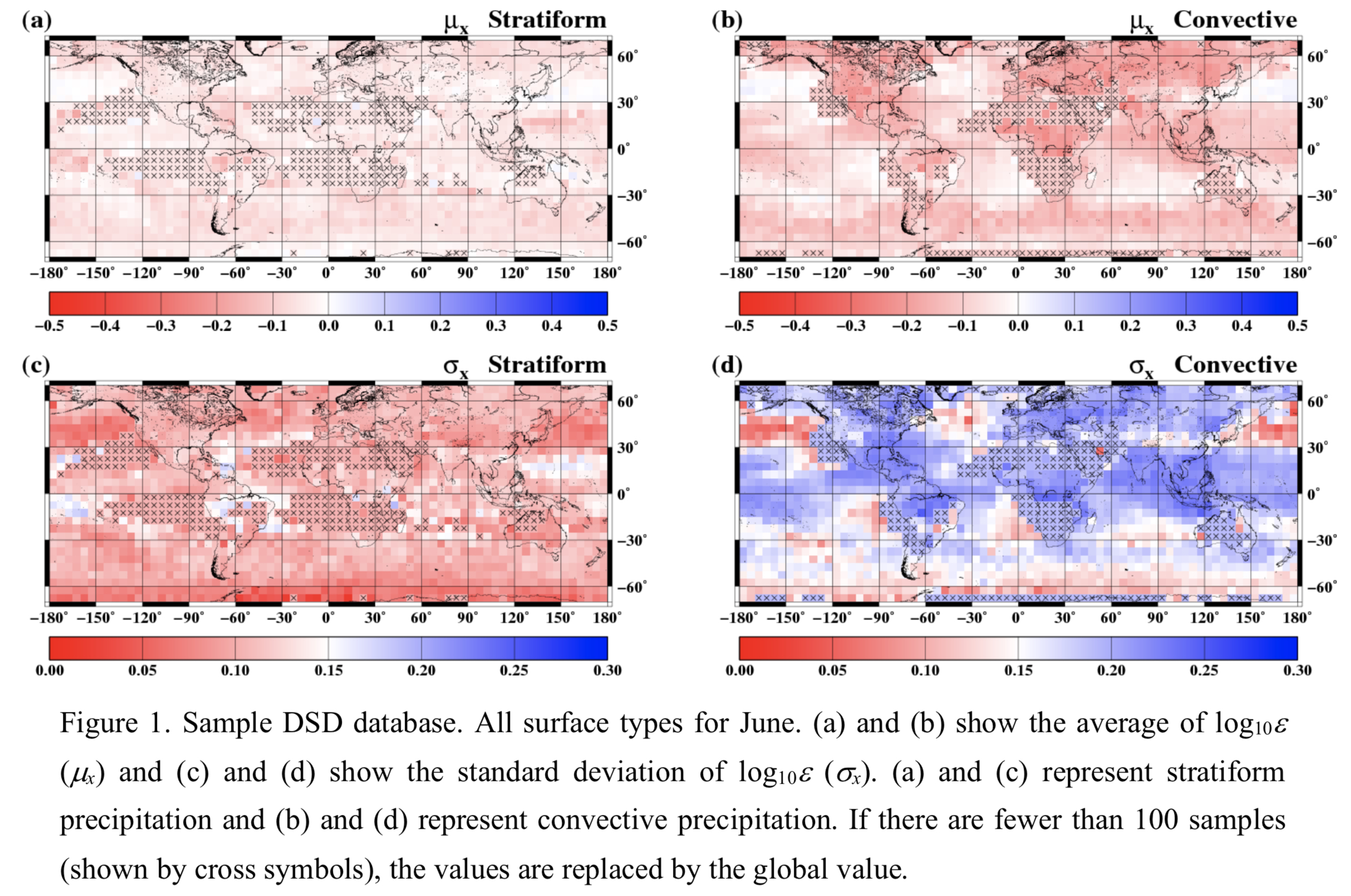
New precipitation rate retrieval algorithms (version 06A) for the GPM Dual-frequency Precipitation Radar are developed. Major changes from the previous algorithms (version 03B) include the introduction of the relation between precipitation rate and mass-weighted mean diameter (R−Dm relation), non-uniform beam filling correction, DSD database (single-frequency algorithms only), and the ZfKa method (dual-frequency algorithm only).
[Comments from Editor in charge and Abstract]
JMSJ Editor's Highlight (Vol. 98 (2020), Issue 4)
|
Kawabata, Y., and M. Yamaguchi, 2020: Probability ellipse for tropical cyclone track forecasts with multiple ensembles.
J. Meteor. Soc. Japan
,
98
,821-833.
https://doi.org/10.2151/jmsj.2020-042 Graphical Abstract |

|

The effectiveness of the probability ellipse for tropical cyclone (TC) track forecasts is investigated with multiple ensembles from the Japan Meteorological Agency (JMA), the European Centre for Medium-Range Weather Forecasts (ECMWF), the U.S. National Centers for Environmental Prediction (NCEP), and the Met Office in the United Kingdom (UKMO), for all TCs from 2016 to 2018. The multiple ensembles composed of these four global ensembles are capable of predicting the situation-dependent uncertainties of TC track forecasts appropriately in both the along-track and cross-track directions. [Comments from Editor in charge and Abstract]
JMSJ Editor's Highlight (Vol. 98 (2020), Issue 2)
|
Stevens, B., C. Acquistapace, A. Hansen, R. Heinze, C. Klinger, D. Klocke, H. Rybka, W. Schubotz, J. Windmiller, P. Adamidis, I. Arka, V. Barlakas, J. Biercamp, M. Brueck, S. Brune, S. A. Buehler, U. Burkhardt, G. Cioni, M. Costa-Surós, S. Crewell, T. Crüger, H. Deneke, P. Friederichs, C. C. Henken, C. Hohenegger, M. Jacob, F. Jakub, N. Kalthoff, M. Köhler, T. W. van Laar, P. Li, U. Löhnert, A. Macke, N. Madenach, B. Mayer, C. Nam, A. K. Naumann, K. Peters, S. Poll, J. Quaas, N. Röber, N. Rochetin, L. Scheck, V. Schemann, S. Schnitt, A. Seifert, F. Senf, M. Shapkalijevski, C. Simmer, S. Singh, O. Sourdeval, D. Spickermann, J. Strandgren, O. Tessiot, N. Vercauteren, J. Vial, A. Voigt, and G. Zängl, 2020: The added value of large-eddy and storm-resolving models for simulating clouds and precipitation.
J. Meteor. Soc. Japan
,
98
, 395-435.
Special Edition on DYAMOND : The DYnamics of the Atmospheric general circulation Modeled On Non-hydrostatic Domains https://doi.org/10.2151/jmsj.2020-021 Graphical Abstract |

|

This study investigates, if atmospheric models with horizontal resolutions of 100 m to 2 km are able to better simulate key features, like clouds and precipitation, of the climate system than currently used models employing much coarser resolution and parameterized convection. Precipitation characteristics are much more realistic in the simulations with explicitly convection, already at kilometer resolutions. Increasing resolution to hectometer scales improves the simulation of precipitation only modestly, but substantially improves the simulation of clouds. The results suggest that new climate models, which explicitly resolve convection and the interaction with its environment, offer exciting opportunities to learn about the climate system. [Comments from Editor in charge and Abstract]
JMSJ Editor's Highlight (Vol. 98 (2020), Issue 1)
|
Takemura, K., and H. Mukougawa, 2020: Dynamical relationship between quasi-stationary Rossby wave propagation along the Asian jet and Pacific-Japan pattern in boreal summer.
J. Meteor. Soc. Japan
,
98
, 169-187.
https://doi.org/10.2151/jmsj.2020-010 Graphical Abstract |

|

To reveal a new possible process linking the quasi-stationary Rossby wave propagation over Eurasia along the Asian jet and the Pacific-Japan (PJ) pattern through the Rossby wave breaking (RWB) east of Japan during boreal summer, this study conducts a lag composite analysis of the past 44 RWB events. The results of this paper show that the quasi-stationary Rossby wave propagation along the Asian jet can excite the PJ pattern, through high potential vorticity (PV) intrusion toward the subtropical western North Pacific associated with the RWB and the consequent enhanced convection over the region. [Comments from Editor in charge and Abstract]
JMSJ Editor's Highlight (Vol. 97 (2019), Issue 6)
|
Tsuyuki, T., 2019: Ensemble Kalman filtering based on potential vorticity for atmospheric multi-scale data assimilation.
J. Meteor. Soc. Japan
,
97
, 1191-1210.
https://doi.org/10.2151/jmsj.2019-067 Graphical Abstract |

|
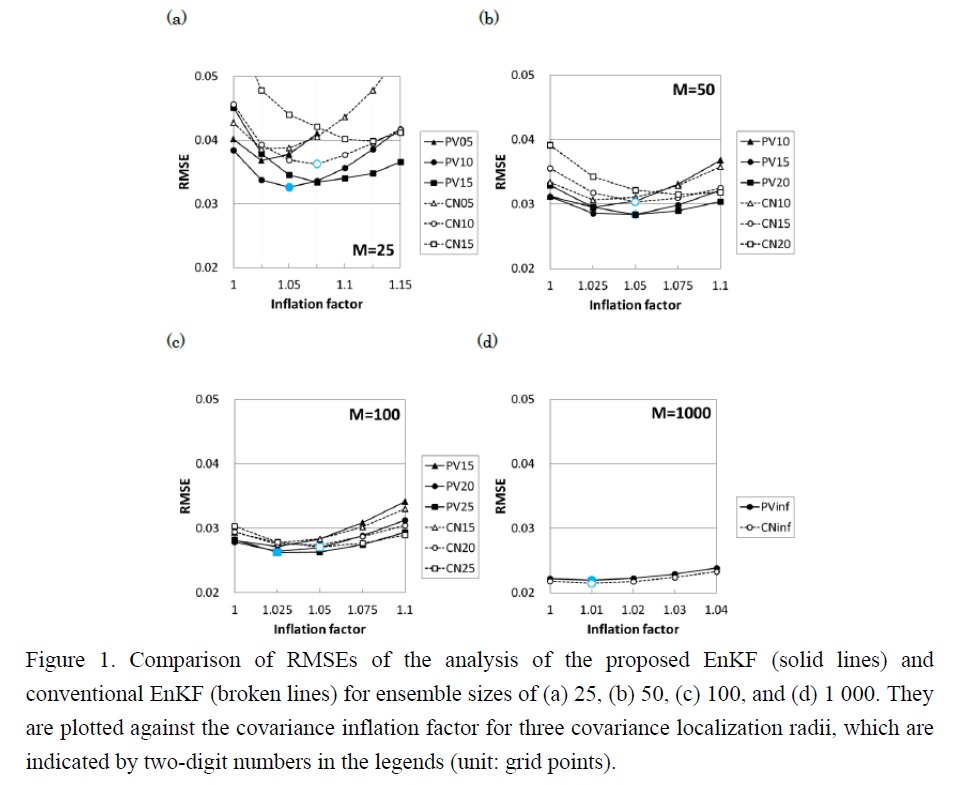
A multi-scale data assimilation method for the ensemble Kalman filter (EnKF) is proposed and its performance is demonstrated using a shallow water model. The method is based on the conservation and invertibility of potential vorticity. It suppresses spurious error correlations between the balanced and unbalanced parts of dynamical state variables and makes it possible to appropriately address the balance issue of covariance localization. [Comments from Editor in charge and Abstract]
JMSJ Editor's Highlight (Vol. 97 (2019), Issue 5)
|
Yukimoto, S., H. Kawai, T. Koshiro, N. Oshima, K. Yoshida, S. Urakawa, H. Tsujino, M. Deushi, T. Tanaka, M. Hosaka, S. Yabu, H. Yoshimura, E. Shindo, R. Mizuta, A. Obata, Y. Adachi, and M. Ishii, 2019: The Meteorological Research Institute Earth System Model version 2.0, MRI-ESM2.0: Description and basic evaluation of the physical component.
J. Meteor. Soc. Japan
,
97
,931-965.
https://doi.org/10.2151/jmsj.2019-051 Graphical Abstract |

|
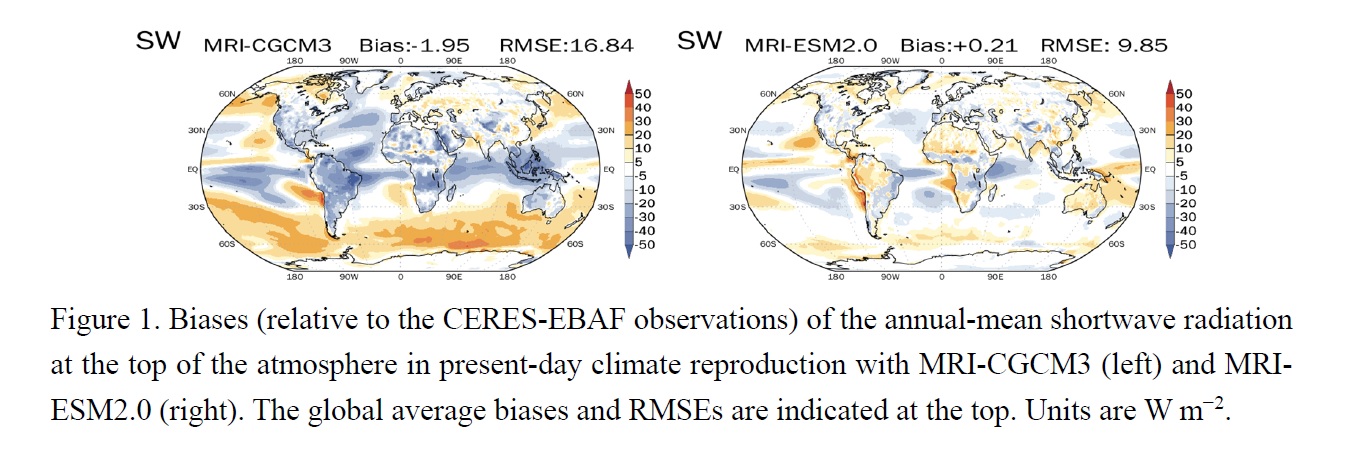
A new earth system model MRI-ESM 2.0 was developed at the Meteorological Research Institute. As a result of enhancement of the atmospheric vertical resolution and various improvements for the cloud scheme, the aerosol model, and the ocean model, the performance in present-day climate reproduction has significantly improved in many aspects compared to the former model MRI-CGCM3. Root-meansquare-error (RMSE) of the shortwave radiation distribution at the top of the atmosphere reduced by about 42% compared to MRI-CGCM3 (Figure 1). Performance is also improved in expressing climate change and variability. For example, the observed global mean surface temperature change from the mid-19th century to the present is reproduced quite well. The stratospheric quasi biennial oscillation is now represented realistically. [Comments from Editor in charge and Abstract]
JMSJ Editor's Highlight (Vol. 97 (2019), Issue 4)
|
Liu, B., C. Zhu, J. Su, S. Ma, and K. Xu, 2019: Record-breaking northward shift of the western North Pacific Subtropical High in July 2018.
J. Meteor. Soc. Japan
,
97
, 913-925.
Special Edition on Extreme Rainfall Events in 2017 and 2018 https://doi.org/10.2151/jmsj.2019-047 Graphical Abstract |

|
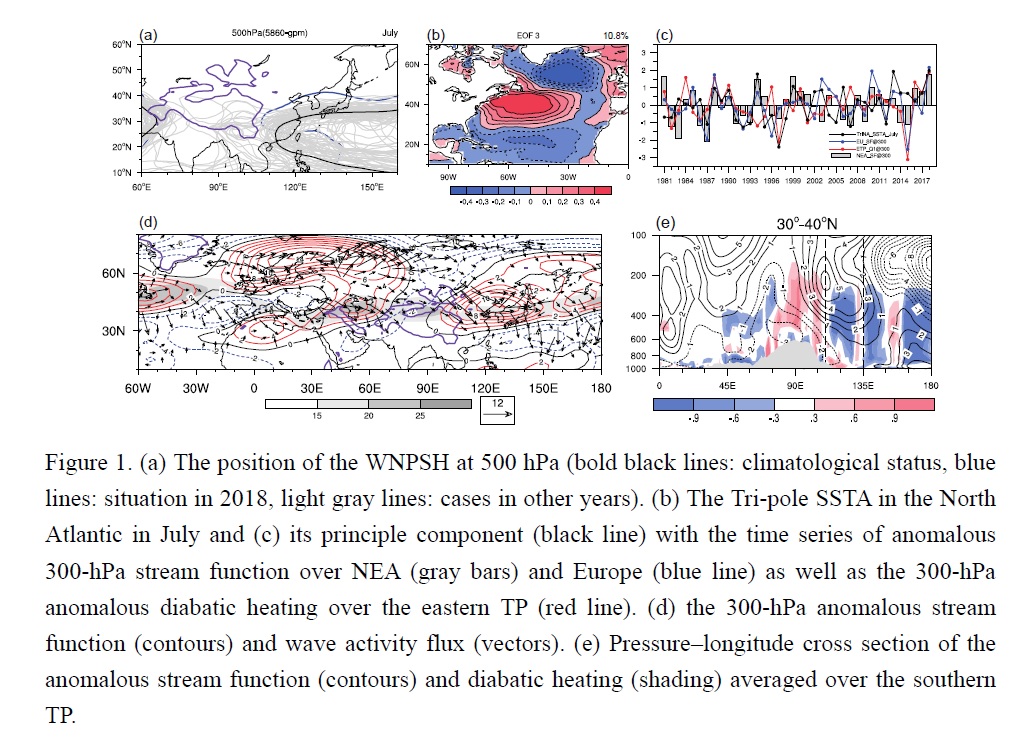
The northward shift of the western North Pacific Subtropical High (WNPSH) in July 2018 broke the historical record since 1958. The present work attributes the extreme WNPSH anomaly to the strongest positive tri-pole pattern of sea surface temperature anomaly (SSTA) in the North Atlantic. This SSTA could induce an eastward propagating wave-train over the Eurasian Continent and enhance the atmospheric diabatic heating over the eastern Tibetan Plateau to cause the extreme northward shift of the WNPSH, finally leading to the extreme heat waves and casualties across Northeast Asia (NEA), especially over the southern Japan. [Comments from Editor in charge and Abstract]






